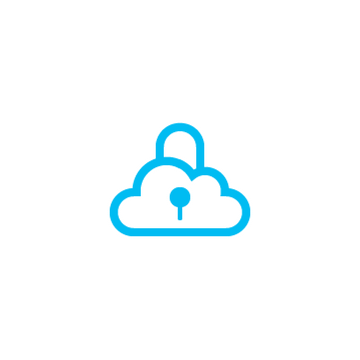Our world is growing older. According to the UN, the global population at 60 years old or over is expected to double by 2050, at which time it will likely reach 2.1 billion. Additionally, the population at 80 years or older is projected to multiply threefold by 2050, resulting in 425 million elderly persons. In the US, older adults are expected to outnumber children for the first time in the country’s history. The elderly population is growing more rapidly than ever before.
As the elderly population in the US swells, the demand for excellent healthcare will exceed its supply—especially in the long-term care industry. For example, the home care market alone is expected to more than double from 2016 to 2024 from $100 billion to $225 billion. Along with this surge in demand comes greater pressure on care staff, not only to provide excellent care but also to respond to increasingly complex processes, regulatory requirements, competition, and a large number of disparate locations.
It’s no surprise that long-term care facilities must facilitate change in order to keep up with continuously increasing complexity. Driving digital transformation could be particularly useful for facilities as they attempt to battle these challenges. For example, digital technologies can help senior care facilities create a more sustainable business model, therefore easing the load carried by long-term healthcare professionals, controlling costs, and improving quality of care. Like all change initiatives, adopting more digital solutions will also require support from industry experts.
So, how can a long-term care facility promote effective change initiatives while battling rising complexity? Here are three tips that Patrick Krischel, VP of Connected Solutions at Crossfuze, recommends for using an IT service desk to support more digital solutions.
Use Your IT Service Desk Proactively
Oftentimes, the IT service desk becomes a reactive source of information whenever an end user encounters a problem. While end users are certainly going to require IT support, if you partner with a proactive service desk, you can utilize it to help with even more than that. According to Krischel, “As you drive change throughout your organization, it’s going to require a balancing act. Not only will you have to consider effective implementation of any new technologies, but you also need to ensure that users have a full understanding of the tools you introduce into the process. A service desk can help you accomplish both.”
Rather than using your IT service desk simply as a reactive solution whenever you require it, consider using it as a proactive resource. First, find an IT service desk provider that prioritizes best practices to ensure they are always supplying the best support they can. Second, lean into them and communicate regularly as you transition into new changes. The right service desk will identify methods to help you drive more effective change throughout your organization.
They will also be sure to offer more support in moments of transition when you most need it. “The longer you wait to adopt digital transformation initiatives, the more support you will need—especially when you require a variety of applications to support several different locations,” Krischel says. “An excellent service desk can help you maintain each application, regardless of the number of locations you have.”
Facilitate Acquisitions with the Infrastructure Provided by Your IT Service Desk
Similarly, consider using your service desk in the case of mergers and acquisitions. The long-term care industry leads the entire healthcare sector in deals, with deal volumes and values continuing to increase. In the first quarter of 2021 alone, 426 deals were made, beating the record set in the fourth quarter of 2020 by 21 percent. Additionally, there have been six megadeals made within the industry—for a total of $5 billion or more. Not only are mergers and acquisitions increasingly common, but they are also becoming more sophisticated. In order to continue providing excellent care throughout this growth, facilities must be able to keep up with and foresee possible challenges to offer complete support to end users.
As facilities become more complex and deal with additional costs and continuously changing processes, they must have tools available to them to ease pressure on end users and continue operating. A service desk can streamline this process by encouraging a shared IT infrastructure. “Use the 24/7 support provided to you by your service desk to ensure that every end user has access to equal support,” says Krischel. “Not only can they make things easier for your staff, but they can also help you consolidate your infrastructure into a single service desk application.”
Encourage Your Staff to Use the Service Desk
The better the IT service desk support, the more prepared your team is to excel at their jobs—especially if they use it regularly. Your service desk is there to help should you and your staff need it, so take advantage of it! If your team isn’t using the service desk as much as they should be, there could be a few reasons why. “If you want your staff to use the service desk, you need to advocate for it,” Krischel says. “First, choose technology that is easy to use, especially when it comes to support. If it’s harder to access support than it is to overlook their tech issues, end users will continue using a flawed system.” As your facility continues to become more complex, end users must be able to fully use the technology you give them to address that complexity.
Consider encouraging your staff to use the service desk by making it a more central aspect of your processes. Communication is key in this case. For example, you could communicate that the service desk is available to them whenever they need it by publicizing it in your daily meetings, through posters and other print media, or with weekly emails or newsletters. However you choose to let your staff know more about the importance of using the IT support staff, if you can provide a great experience for your end users, they will be more likely to use it. Above all else, you should prioritize providing the highest-quality service desk possible.
Whether you’re worried about your facility’s increasing complexity due to greater and larger mergers and acquisitions, the rapidly growing elderly population, intense regulation and competition, or something else, an IT service desk can help provide the support you need to continue providing exceptional care to your residents. To learn more about how Crossfuze can help you address increasingly complex processes with our high-quality service desk, reach out to us at LetsTalk@crossfuze.com.





